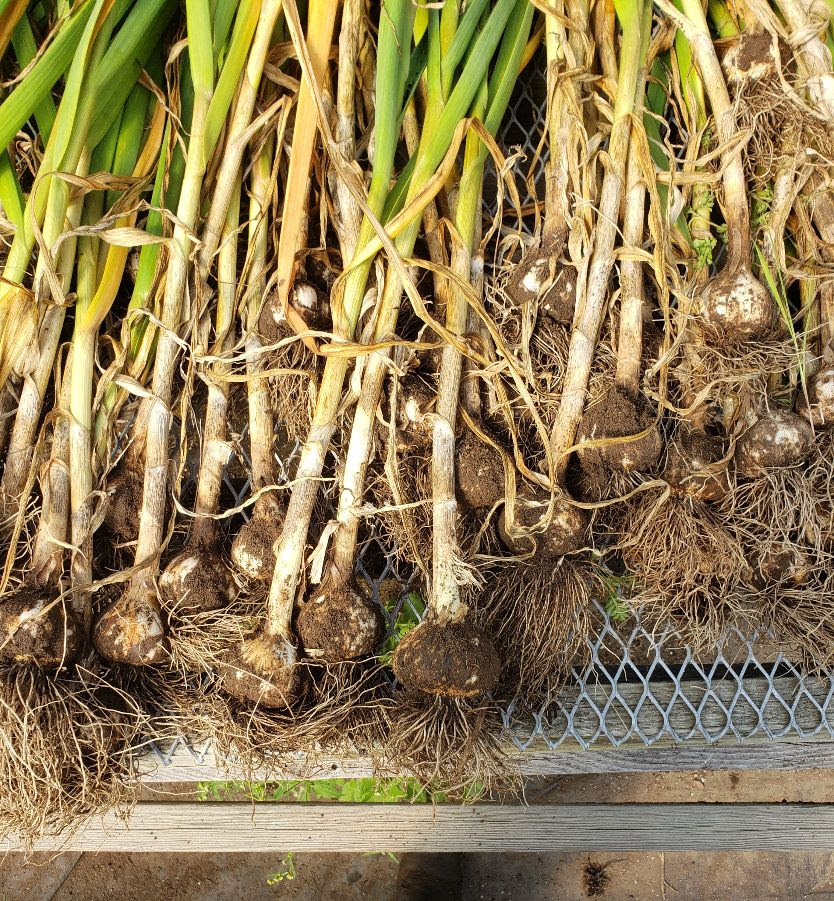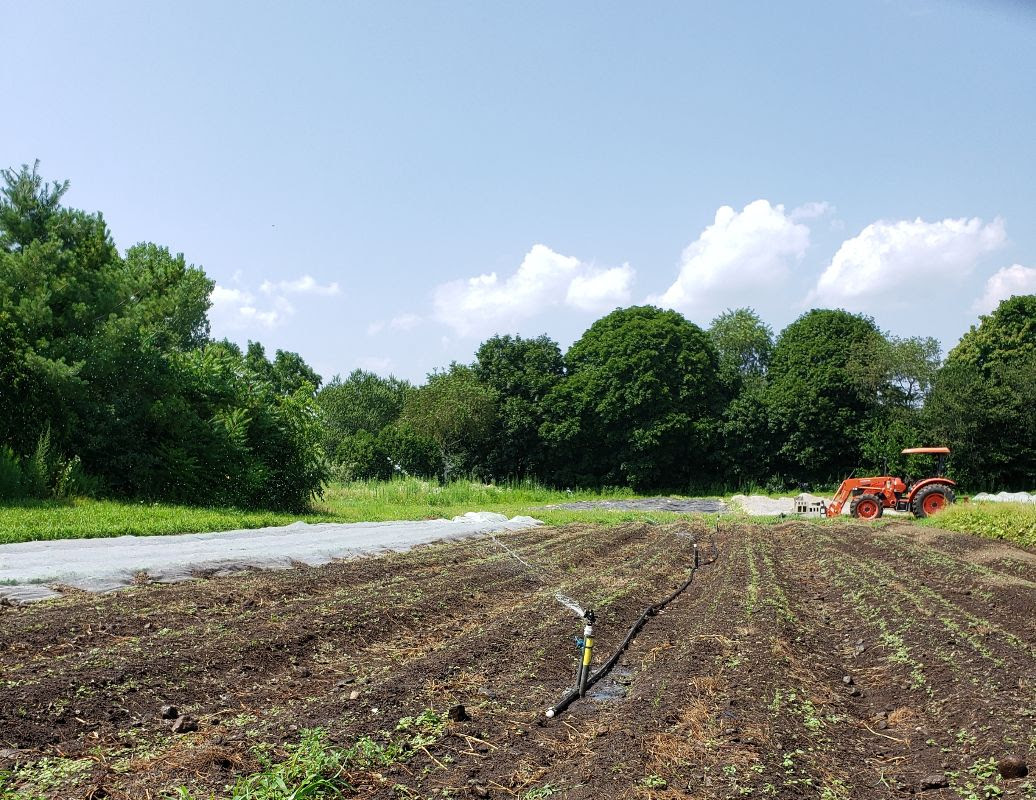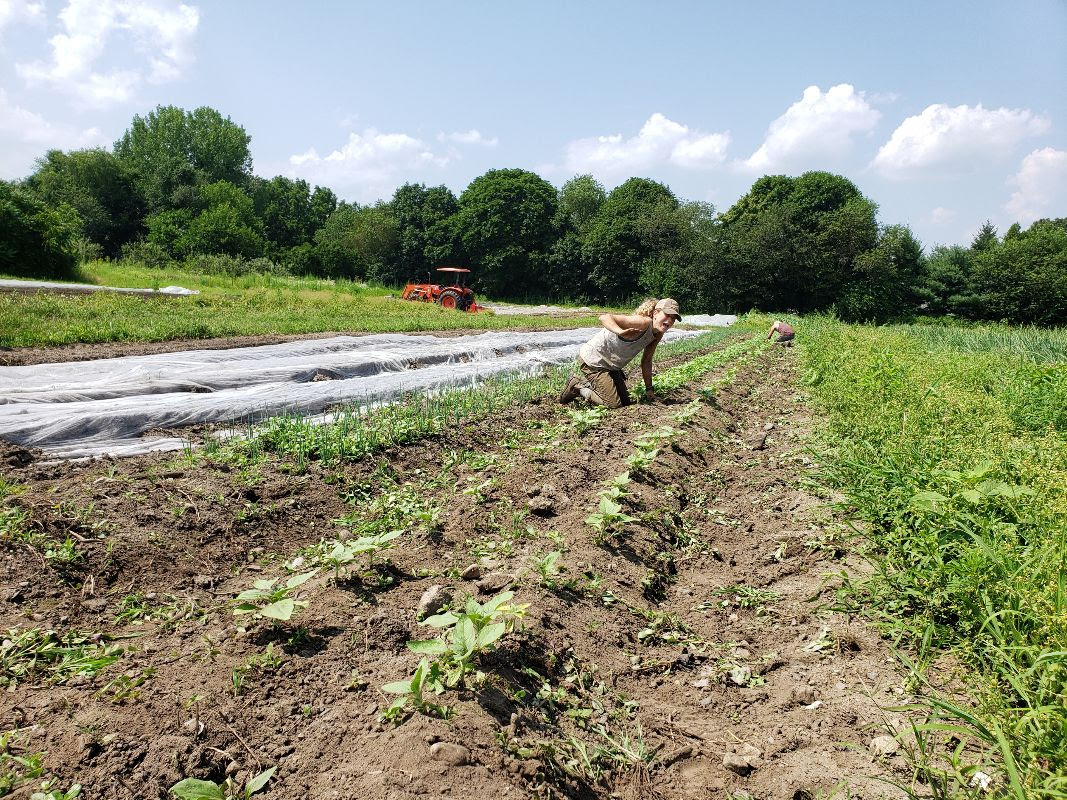Notes from the field : Week 8

“On Irrigation, or How the Crops Get Watered with No Rain in the Forecast”
The past few weeks, we’ve been moving irrigation around with some regularity. When we fail to get about an inch of rain in a week, we need to decide on which crops need irrigation the most.
Things that have been recently seeded or transplanted take precedence, along with crops that don’t do as well in dry conditions.
Generally crops with shallow root systems like swiss chard, lettuce, cucumbers and fennel need more constant moisture than crops with deeper root systems like tomatoes, squash and melons.
We use both overhead and drip irrigation. Drip irrigation is used in crops that are planted into black plastic (tomatoes, eggplant) or crops that don’t like having their leaves wet (squash, cucumbers).
Our bed shaper has the ability to lay plastic mulch and drip tape at the same time, allowing for efficient irrigation set-up. Once drip is in place all we have to do is move our header hose to where the beds we want to irrigate are, connect them and run any number of hoses from the closest spigot to the header.
Overhead irrigation is used in all other crops. Our overhead system is a set of three spinkers that we attach to movable stakes in the ground to keep them upright. More hoses are run to attach it to the closest spigot.
This week we have irrigation planned for our newest planting of Swiss Chard, our Fall CSA leeks, Sweet Potatoes, newest kale planting, newly seeded carrots and KN Bravo (a beautiful purple daikon radish) some tomatoes AND watermelon.
It’s a balancing act getting water to everything that needs in with only 24 hours in a day. Luckily we can, and usually do, run drip irrigation overnight!

Our overhead irrigation watering some newly germinated carrots

Farmers Emmy and Matt weeding a new generation of Sunflowers!

